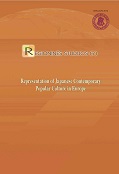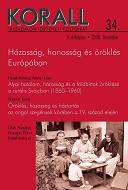
Japanese Popular Culture in Latvia: Lolita and Mori Fashion
Japanese Popular Culture in Latvia: Lolita and Mori Fashion
Keywords: Cultural exchange in the global era; Lolita; Mori fashion; Japanese popular culture in Europe; kawaii culture; Kultūriniai mainai globalioje eroje; Lolita; Mori mada; japonų populiarioji kultūra Europoje; kawaii kultūra
Lolita fashion – one of the elements of Japanese popular culture as a fashion subculture was created in Japan, taking inspiration from Victorian-era costumes and Rococo period clothing. Amazingly, through the global dissemination of Japanese popular culture this fashion found its way back to Europe. In Riga cosplay events, staging various costumes from Japanese manga and anime world take place since 2004 with the start of the 1st. Anime Festival. Since then, every year various other events like Cosplay Con, Christmas, Halloween parties and individual gatherings attract several hundreds of participants who are given a possibility to show their various costumes inspired from Japanese anime and manga world. Among them there is a group of girls in Riga who like Lolita fashion and organize different meet-ups and events like and picnics, teaparties, museum visits, photosessions of Lolita costumes in Old Riga, Riga gardens and parks. The photos obtained in these events reveal a unique cultural phenomenon: a harmonious blend of two cultures and mentalities: Japanese and Latvian. The modern costumes inspired by Japanese popular culture fit well in Riga historical settings several hundreds of years old.The author was fascinated by their Japanese-like youthful crave for unusual, bizarre, unacustomed, extravagant, well balanced with elegant correctness typical to North Europe. Another factor is worth mentioning: most of the costumes were self made, revealing individual taste in the choice of colors and materials. Handling the topic of Japanese fashion they adjusted it to local environment and individual taste. Some of their peculiar, antique accessories were borrowed from collections that once belonged to their grandmothers and grandfathers showing yet another aspect how old and new, different cultural customs intertween in the global era. The interviews taken with „Riga Lolitas” give insight how these girls took interest in Japan, Lolita fashion, how they created their costumes, what they think of Japanese culture, etc. Lolita fashion in Latvia is also analyzed from the points of relationship with kawaii culture, connection with Goth culture, sign/language system used by members of certain subcultures, women sexuality, transnational political economy. It is discussed also in terms of creativity, rebellion against the conventions of contemporary society, feminine lifestyle, self development, psychological impact. Mori (Forest) Girl – another Japanese fashion subculture evident in Latvia, that is to some extent similar to Country Lolita or Mori Lolita, emerged in Japan in 2007 as a reaction against Japan’s super urbanization, and displays common appreciation of nature, natural materials, practicality, casualness, interest in the old, traditional in the two countries – Latvia and Japan. Mori fashion can be interpreted in some features as the representation of wabi-sabi principles in the modern fashion form.
More...
